.jpg)
| Barrines ..pygmies of N.Q. rain forest. Philippino pygmies...all one race. | |||
|---|---|---|---|
| |||
| Belligerents | |
|---|---|
| Shepherds of the Van Diemen's Land Company | Pennemukeer Aborigines of the North west tribe |
| Commanders | |
| Unknown | Unknown |
| Strength | |
| 4 | Over 30 |
| Casualties and losses | |
| None | 30 killed |
The Cape Grim massacre occurred February 10, 1828 in the North west of Van Diemen's Land, now known as Tasmania, when four shepherds with musket guns are alleged to have ambushed over 30 Tasmanian Aborigines from the Pennemukeer band from Cape Grim, killing 30 and throwing their bodies over a 60 metre cliff into the sea. An unknown number were reported to have escaped. The hill where the massacre occurred was then called Victory Hill by the shepherds.[1]
Contents[hide] |
[edit]Background
The frontier conflict in Tasmania between Europeans and Aborigines has been alleged to have been marked by violence, cruelty, and abduction and rape of women, with a gross imbalance in weapons. Jan Roberts said that:
- "In general, Aboriginal men were shot on sight and the women seized to serve the needs of shepherds and sealers, many of whom took two Aboriginal women each."[2]
However, other historians including Josephine Flood disagree with this assessment:
- "Abduction and ill-treatment of Aborigines certainly occurred, but the extent of atrocities and 'massacres' has been grossly exaggerated."[3]
In 1826 the Van Diemen's Land Company set up sheep stations at Cape Grim and at Circular Head. When the Peerapper band from West Point revisited Cape Grim in December 1827 they found several shepherds, their huts and many sheep. The shepherds attempted to entice some of the Aboriginal women into a hut with the Aboriginal men strongly objecting resulting in a fight with one shepherd being speared in the thigh[4] and one Aborigine shot dead.[5]
In revenge the tribe drove a flock of sheep over a cliff, spearing 118 of them.[2][6] One contemporary source claims that in February 1828 a Van Diemen's Land company punitive expedition killed twelve Aborigines in response.[7] However, historian Keith Windschuttle argues that the account is dubious and is most likely a distorted rumour which conflates two other events; an incident when the crew of a ship's boat attempted to fire on some Aborigines but were thwarted by wet gunpowder and the conflict between convict shepherds and Aborigines at Cape Grim.[8][9]
[edit]Massacre
According to a report by George Augustus Robinson, on February 10, 1828, four shepherds ambushed the Pennemukeer Aborigines from Cape Grim while they were muttonbirding, killing 30 people.[10] First the shepherds fired upon the families camped on the beach, and then drove those who sought shelter in the rocks up the hill where they were massacred before the shepherds dumped the bodies over the cliff at Suicide Bay—the same cliff that the sheep had been driven over. The shepherds then called this Victory Hill. The Aborigines that escaped the massacre called the white settlers at Cape Grim the nowhummoe or devils and avoided Cape Grim but occasionally plundered isolated huts for provisions.[2][6]
George Augustus Robinson investigated the massacre two years later and gave this account:
- "On the occasion of the massacre a tribe of natives, consisting of women and children, had come to the [Doughboy] islands. Providence had favoured them with fine weather ... They swam across, leaving their children at the rocks in the care of the elderly people. They had prepared their supply of [mutton]birds, had tied them with grass, had towed them on shore, and the whole tribe was seated round their fires partaking of their hard-earned fare, when down rushed the band of fierce barbarians thirsting for the blood of these unprotected and unoffending people. They fled, leaving their provision. Some rushed into the sea, others scrambled around the cliff and what remained the monsters put to death. Those poor creatures who had sought shelter in the cleft of the rock they forced to the brink of an awful precipice, massacred them all and threw their bodies down the precipice ... I went to the foot of the cliff where the bodies had been thrown down and saw several human bones, some of which I brought with me, and a piece of the bloody cliff. As the tide was flowing I hastened from this Golgotha."[4]
[edit]
 Settler's hut Australia circa 1850.
Dinner on board, voyage to Australia.
Settler's hut Australia circa 1850.
Dinner on board, voyage to Australia.


 Philippino pygmies.
Philippino pygmies.
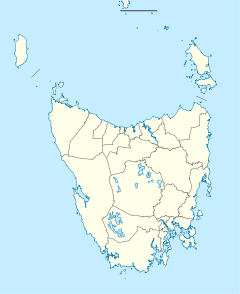

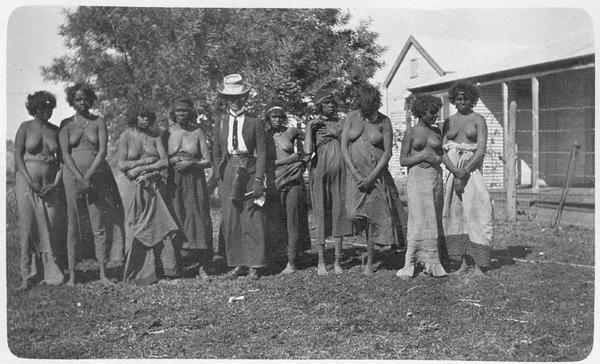






+copy.jpg)










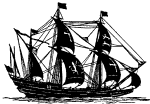





















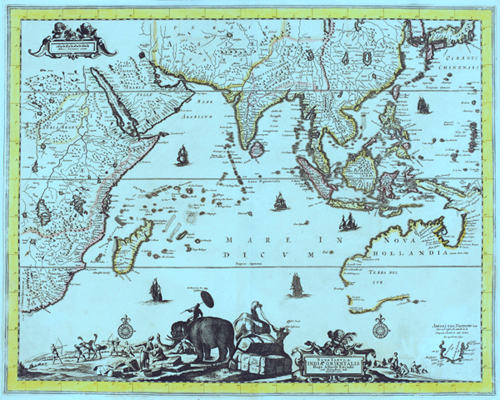





















.jpg)
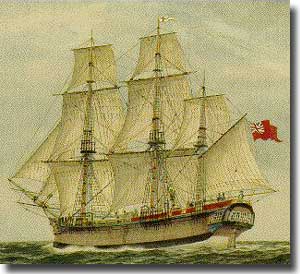

























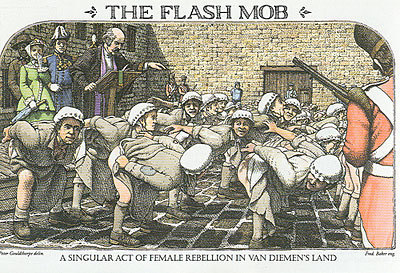
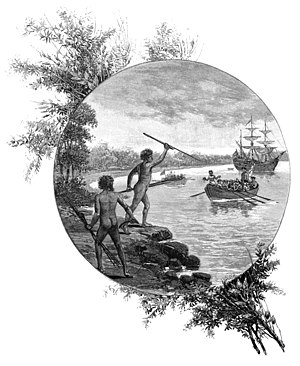 G
G







.jpg)
















No comments:
Post a Comment